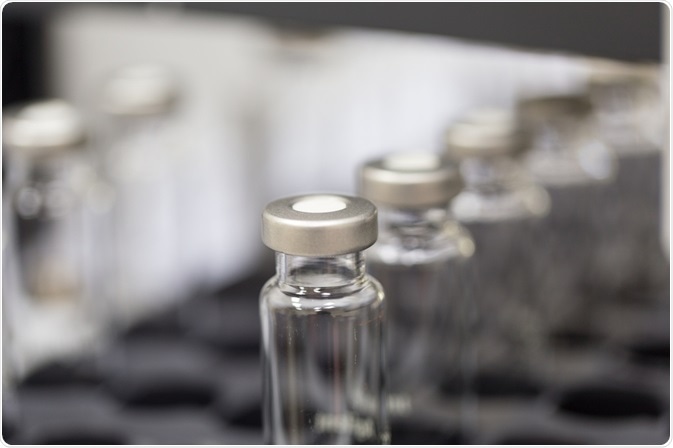A substantial fraction of research investigations are concentrated on apprehending, diagnosing, and preventing human diseases, and recently attention has shifted towards biomarker discovery. A method that combines gas chromatography (GS) and mass spectrometry (MS) for this purpose can easily identify the presence of different substances in a sample.
 Image Credit: Rattiya Thongdumhyu/Shutterstock.com
Image Credit: Rattiya Thongdumhyu/Shutterstock.com
What is GC-MS?
GC-MS involves coupling a mass spectrometer to a gas chromatography column. The capillary column of the gas chromatograph has an internal diameter of few tenths of a millimeter. The inner wall of the capillary tube may be coated with either a liquid stationary phase or thin support material which adsorbs the stationary phase.
The column temperature needs to be maintained precisely. As the sample needs to be vaporized, the temperature should be slightly higher than the boiling point of the sample. Different kinds of detectors may be used whose sensitivities and selectivity are different. These include flame ionization detector, thermal conductivity detector, as well as electron capture detector among others.
Based on the properties of the sample, different compounds of the sample elute at different times based on the retention time. The mass spectrometer then captures and ionizes different particles, and further detects them based on their mass-to-charge ratio.
Why combine gas chromatography and mass spectrometry?
The two major disadvantages of the techniques are that the sample need to have a very high purity to be separated in a mass spectrometer and the detectors in gas chromatography cannot distinguish between particles that have the same retention time or take the same time to cross the column. That creates problems for samples containing molecules with similar ionized fragments.
However, the possibility of such errors is reduced when two methods are combined in order to distinguish sample components, which makes GC-MS a popular technique in many laboratories that need to identify compounds in a sample.
Using GS-MS to identify biomarkers of inborn errors of metabolism
The following steps are used to identify biomarkers using GC-MS: sampling, performing measurements, pre-processing the data, processing the data, identifying different patterns of biomarkers, statistical validation of those patterns, and finally, biological verification.
Pre-processing the data is the most time-consuming step, as precautions should be taken to ensure that the spectrograms are aligned before they are analyzed. The data from the GC-MS is converted to Matlab structures and principle component analysis is then used to convert the original dataset in to smaller subset by removing the uncorrelated variables.
After pre-processing, the data is analyzed using a biomarker identification algorithm. This can be utilized to identify specific biomarkers associated with different metabolic diseases, such as phenylalanine hydroxylase, acyl CoA dehydrogenase, 3-Methylcrotonyl CoA carboxylase, etc.
GS-MS to identify biomarkers for nephrotic syndromes
GS-MS of urine was recently used to discover biomarkers for nephrotic syndromes, as urine metabolites reflect any changes in kidney function or injury.
In the study, urine samples were thawed and extraction solvent was added. Subsequently, samples were centrifuged and the supernatant was concentrated by drying. The dried extract was processed and subjected to GS-MS.
After performing gas chromatography and mass spectrometry, the data was pre-processed and processed. In the end, the metabolic signals were identified by using the BinBase algorithm. For quality control, 31 pure reference compounds were also analyzed before and after the test sample analysis.
Normalization of data
Ion intensity may vary in different samples due to experimental errors and inherent biological variation. Also, pre-treatment of samples and prolonged data analysis time can also lead to unwanted variations in data. For these reasons, normalization both pre-and post-acquisition is applied to GS-MS data to make the data comparable between samples.
This aspect is critical in the quantitative analysis of GS-MS data. Pre-acquisition variabilities arise from differences in the concentration of the sample. One example is the different water content in cells that arise from different parts or cell size. Studies show that different normalization methods can influence the kind and number of biomarkers that are identified using the GS-MS method.
Further Reading